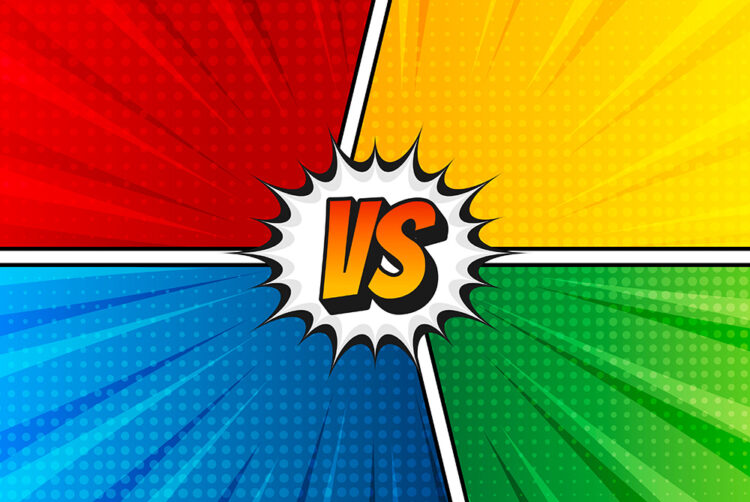Media is the secret weapon for making award-winning creative

Opinion
Creative media has taken a back seat because creative effectiveness doesn’t properly consider how the message is delivered.
A type of creativity, an innovative thinking kind of mindset, is on the rise. It’s different and complementary to advertising creativity in that it starts and ends in a different place. We call it ‘media creativity’.
Media creativity is showing up in spades across winning work and in advice to marketers. An example being some excertps from the Cannes Lions’ 2023 Wrap Up Report — “Consider how your brand can show up in new, unexpected ways. Think about a ‘blue ocean’ strategy – turning up in places where your competitors aren’t.”
“Brands should work with communities to understand specific groups of people and the platforms where they spend their time.”
“Creative impact may rely on evergreen components: a consistent brand platform or positioning, cultural relevance, and unique advertising models. But the methods and structures for creating ideas that deliver business value are evolving.”
“Creative work that Juries awarded showed new ways to build brands that disregarded traditional models … and demonstrated how to convert it into engagement and action.”
And “… people got how the media and the algorithm works and flipped it. If we can use that incredible depth of media knowledge and then turn it into something creative, then that’s incredibly inspiring,” (this last one is a quote from Diageo’s Isabel Massey, global head of media and content transformation, when referring to Samsung’s “Flipvertising”).
What is ‘media creativity’?
There are two key ingredients. The first ingredient is thinking of media as a brand’s body language — a powerful lever for brands to show, not tell. Because it’s not just what you say but how (and where) you say it. The second ingredient is understanding how people experience media channels, platforms, content, and everyday tech. Put these two together to create a unique and meaningful way for your brand and business to show up.
There are ways to use this recipe to create media creativity that is “incredibly inspiring” whether that be by channel, content format, application of technology or behaviour change.
Consider health and life insurance brand Partners Life’s “The Last Performance”, otherwise known as a masterclass in hacking content format. It integrated itself into New Zealand’s most popular murder mystery TV show, The Brokenwood Mysteries, by using the show’s dead characters as spokespeople. For the entire season, dead characters awoke, reflected on their lives and deaths, and stressed the importance of life insurance.
Moreover, don’t let creative bounds be restricted by what you can plan or buy. Equally, it’s possible to create media. Think “FitChix”, where Honest Eggs Co. recorded its chickens’ activity with fitness trackers to support free-range claims.
How do you, then, crack media creativity? It’s clearly the way to create work that works (and wins). Well, there are a few principles and practices that you’re welcome to steal…
1. Mix things up with people.
Connect specialists with generalists and thinkers with doers because a diverse cross-section means more ways of seeing a problem or opportunity. At Wavemaker, this includes workshopping with our clients. Debate should trump consensus. The grit produces the pearl. Although, it’s best to have method for the madness. We manage it with Pixar’s three stages: Dream it, Build it, Critique it.
2. Push for collaboration between media and message.
Use the connections between touchpoints to bring scale and creative coherence without sacrificing the nuance of each element. Bring different creatives into the room. There’s no such thing as too many creative voices. Nor should there be a hierarchy between them. Of course, there is a point when the core idea needs everyone rallying around it. However, be open to where that can come from before everyone gets on with their bit.
3. Acknowledge your gaps.
It is helpful that co-ownership of the idea and strategic partnerships are gathering momentum. Appreciating that it’s not always smart to go it alone when another brand, media owner or tech partner has the missing piece is a sign of maturity, not naivety. It can give you a leg up to more creative results.
4. Everything, everywhere, everyday.
Much like when everything looks like a nail to someone wielding a hammer, try seeing media in the everyday. Dole’s use of trash bags to highlight the problem of food waste is a lovely example. Look for the unique role your brand can play in people’s lives and where it can add value. Explore ‘what ifs?’
5. Look for problems.
Specific, sticky problems are more likely to lead to brilliant solutions. “Fall in love with the problem, not the idea,” as Unilever’s Aline Santos says. Following the problem can also help us change speeds – and make time for a solution worth cracking but no longer bound by a campaign brief.
***
So, as we all gird our loins to tackle annual planning, make space for this idea of media creativity. Challenge your assumptions of what media is supposed to do and smash some of those conventions. It will expand your creative toolkit and open a world of possibility.
Ann Wixley is executive creative director at Wavemaker UK.
Editor’s note (3pm, 28 Sep): This article has been modified after publication to include additional content about the principles and practices.
Strategy Leaders: The Media Leader‘s weekly bulletin with thought leadership, news and analysis dedicated to excellence in commercial media strategy.
Sign up for free to ensure you stay up to date every Thursday.
Roblox: two big changes mean brands must now rethink strategy




